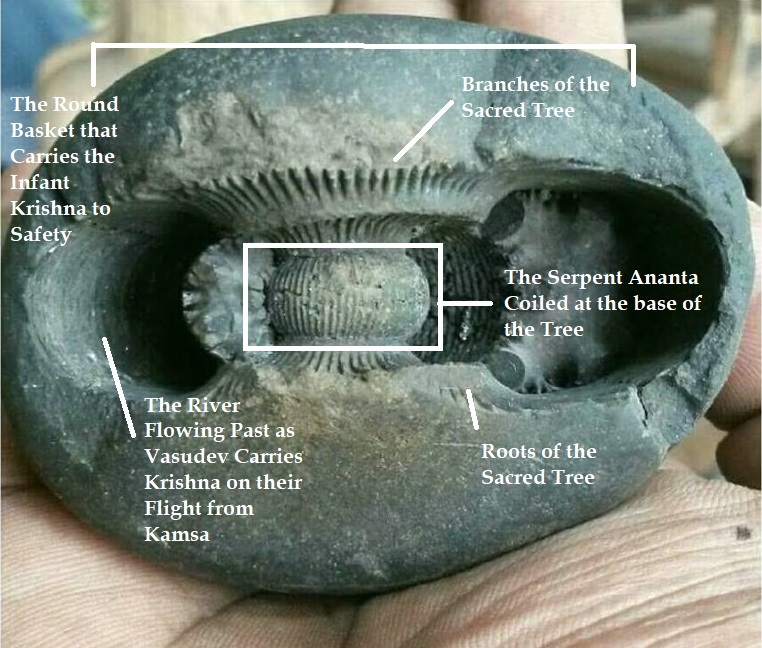The book
is nearly complete! It’s been a long road but I will be turning in the revised
and completed manuscript to my publisher in just a few weeks. I believe I’ve
mentioned it before but I have decided that my current research will be
separated into two different books. The first, which hopefully will be coming
out sometime around the beginning of next year, is my principal ethnography
about Shaligram pilgrimage in Mustang, Nepal and about the active practice of Shaligram
ritual traditions throughout South Asia. The second is going to be about
Shaligram interpretive traditions. This way, I can frame the first book as an
introduction to the topic of Shaligram pilgrimage for academics and laypeople
who aren’t likely to have any prior background or knowledge of Shaligrams at
all. The second book can then be designed more for Hindus, Buddhists, and
Bonpos who already have some prior experience with and understanding of
Shaligrams or who actually practice with Shaligrams right now.
But as I finish up this first manuscript and get it off to the next step in the
process, I’m starting to think about how I want the second manuscript to work.
I already have a series of “field guideâ€-style pages that detail the
characteristics of each of the 90 or so name-categories of Shaligram stones and
I think those will be especially valuable to practitioners. But I also want to
have some kind of commentary at the beginning that discusses exactly how
Shaligrams are read. This is a challenge, of course, because there are several
different Shaligram interpretive traditions and each tradition reads the shilas in slightly different ways. But
here is a little of what I am thinking.
Firstly, I want to talk about the main sets of characteristics: shape, color, set,
vadana (mouth), vanamala (white thread), and chakra (spiral). Each of these
characteristics exists on something of a spectrum. In other words, there are a
variety of shapes a Shaligram might appear in, a few different colors, and it
might have one or more vadanas or chakras. Or, as it may be, none at all. In
any case, this makes any discussion of variations potentially limitless and I
just don’t have the time or space to cover every possible permutation.
Secondly, I will need to have some commentary on each of the current Shaligram
traditions. There are, for example, several Vaishnava Shaligram traditions, a
few Shaiva traditions, a number of Smarta traditions, as well as both Jain and
Buddhist traditions. Not surprisingly, these various traditions all tend to use
different combinations of sacred texts, guru lineages, and deity genealogies to
interpret the specific manifestation present in the shila and, though they overlap significantly, they are each unique
and distinct. I’ve compiled a table of my data and descriptions, but I am note
entirely sure what I want to do with it just yet.
And lastly, I want to both acknowledge and pay homage to the Shaligram books
that have come before me. The two main ones being, of course, Rao’s Shaligram
Kosha and Ram Charan Sharma’s Shaligram Puran (I discuss pilgrimage
literature in the ethnography). Both of these works, though extremely difficult
to find outside of India, have been instrumental in my research and deserve the
best citations I can give them. They also aptly demonstrate some of the challenges
of working with Shaligram traditions as they move outwards from the Himalayas.
As Sharma’s work shows, for example, several Shaligram traditions have begun to
incorporate other sacred stones, such as Dwaraka shilas and Shiva Lingams, and
ritual objects, such as murti and
coins, in place of rarer Shaligrams that have been otherwise too difficult to
obtain. This means that any given Shaligram puja
might incorporate a wide variety of mantras,
images, objects, or other accoutrements whose relationships to one another
might not be immediately apparent.
Ultimately,
as I continue to contemplate how best to move forward, I have been
experimenting with a few ways to demonstrate “reading Shaligrams.†One,
represented by the image below, takes a diagrammatical approach to mapping out
specific characteristics and their meanings. I’m also considering using other
combinations of tables, images, scans, and drawings to highlight the important
processes in the most understandable way I can. Hopefully, either later this
year or next year, I’ll have the chance to devote a significant amount of time
to it and to the complementary online database I’ve been contemplating for a
while now.
Reading Shaligrams is a challenge. Both in terms of reading about them and reading the shilas themselves. So, it’s going to be
a delicate balance. I’ve already included as many Vedic, Puranic, Shastric, and
Tantric references as I can and I will continue to document the various ways in
which both sacred texts and peoples over time have come to understand
Shaligrams and to receive darsan of
the deities present. But in the end, I know that I can’t include everything. It’s
a start, though.
Furthermore, I’m interested to hear what you all might think, in terms of
format, information, or presentation. If anyone has any thoughts, I’m open to
suggestions! Feel free to comment here or contact me on Twitter: @Manigarm

